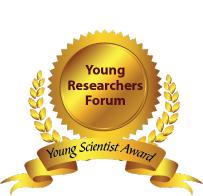Artificial DNA synthesis
Artificial DNA synthesis, sometimes known as DNA printing is a method in synthetic biology that is used to create artificial genes in the laboratory. Currently based on solid-phase DNA synthesis, it differs from molecular cloning and polymerase chain reaction (PCR) in that the user does not have to begin with pre-existing DNA sequences. Therefore, it is possible to make a completely synthetic double-stranded DNA molecule with no limits on either nucleotide sequence or size. The method has been used to generate functional bacterial or yeast chromosomes containing approximately one million base pairs. Recent research also suggests the possibility of creating novel nucleo base pairs in addition to the two base pairs in nature, which could greatly expand the genetic code
Artificial DNA synthesis include :
- Recombinant DNA technology
- PCR(Polymerase Chain Reaction)
- Gene Purification
Related Conference of Artificial DNA synthesis
21th World Congress on Tissue Engineering Regenerative Medicine and Stem Cell Research
16th International Conference on Human Genetics and Genetic Diseases
19th International Conference on Genomics & Pharmacogenomics
Artificial DNA synthesis Conference Speakers
Recommended Sessions
- Gene Editing
- Microfluidics
- Molecular Programming
- Applications of Synthetic Biology
- Artificial DNA synthesis
- Bio-manufacturing
- Biosensors
- Case studies
- Computational Modelling
- Engineered Cell Therapies and Antibodies
- Ethics and regulations
- Genomic Engineering
- Healthcare / Drug Discovery
- Mammalian Synthetic Biology (Human Artificial Chromosomes)
- Metabolic Engineering
- Next Generation Sequencing
- Plant synthetic Biology
- Protein Engineering
- System Biology
Related Journals
Are you interested in
- 3D Bioprinting, Organ Fabrication & Bioartificial Tissues - Stem Cell 2026 (Netherlands)
- Aging Biology, Longevity Science & Cellular Rejuvenation - Stem Cell 2026 (Netherlands)
- Artificial Intelligence and Computational Biology in Regenerative Medicine - Stemgen 2026 (Japan)
- Bioinformatics, AI Models & Predictive Regeneration - Stem Cell 2026 (Netherlands)
- Biomaterials and Nanotechnology in Regenerative Medicine - Stemgen 2026 (Japan)
- Cancer Stem Cells & Targeted Therapeutics - Stem Cell 2026 (Netherlands)
- Cancer Stem Cells and Oncology - Stemgen 2026 (Japan)
- Cardiac, Vascular & Musculoskeletal Regeneration - Stem Cell 2026 (Netherlands)
- Cardiovascular Regeneration - Stemgen 2026 (Japan)
- Clinical Translation of Stem Cell Therapies - Stem Cell 2026 (Netherlands)
- Clinical Trials and Translational Stem Cell Research - Stemgen 2026 (Japan)
- Commercialization, Biobanking & Industry Innovations - Stem Cell 2026 (Netherlands)
- Ethical, Legal, and Social Implications in Stem Cell Research - Stemgen 2026 (Japan)
- Ethical, Regulatory & Quality Control Frameworks - Stem Cell 2026 (Netherlands)
- Exosomes, Extracellular Vesicles & Cell-Free Therapeutics - Stem Cell 2026 (Netherlands)
- Future Trends: Organoids, Bioengineering, and Next-Generation Therapies - Stemgen 2026 (Japan)
- Gene Editing and CRISPR Technologies - Stemgen 2026 (Japan)
- Gene Editing, CRISPR Therapies & Regenerative Genomics - Stem Cell 2026 (Netherlands)
- Induced Pluripotent Stem Cells (iPSCs) and Reprogramming - Stemgen 2026 (Japan)
- Mesenchymal Stem Cells (MSCs) in Therapy - Stemgen 2026 (Japan)
- Regeneration in Neurodegenerative & Spinal Cord Disorders - Stem Cell 2026 (Netherlands)
- Regenerative Approaches in Diabetes & Metabolic Disorders - Stem Cell 2026 (Netherlands)
- Regenerative Dentistry and Craniofacial Applications - Stemgen 2026 (Japan)
- Regenerative Immunology & Immune Modulation - Stem Cell 2026 (Netherlands)
- Regenerative Medicine and Tissue Engineering - Stemgen 2026 (Japan)
- Stem Cell Banking and Cryopreservation - Stemgen 2026 (Japan)
- Stem Cell Biology and Cellular Mechanisms - Stemgen 2026 (Japan)
- Stem Cell Engineering & Cellular Reprogramming - Stem Cell 2026 (Netherlands)
- Stem Cells in Neurological and Neurodegenerative Disorders - Stemgen 2026 (Japan)
- Tissue Engineering, Biomaterials & Smart Scaffolds - Stem Cell 2026 (Netherlands)


